Who was Barney Allis? And why is a ‘forlorn’ KC plaza named after this beloved man?
Uniquely KC is a Star series exploring what makes Kansas City special. From our award-winning barbecue to rich Midwestern history, we’re exploring why KC is the “Paris of the Plains.”
By the time Barney Allis collapsed and died on a sidewalk in downtown Kansas City, this son of Jewish immigrants from Poland was known for running one of the finest hotels in the world — the glamorous Muehlebach Hotel.
If reality TV had been around in his day, there would have been camera crews in the lobby and paparazzi parked outside because Allis turned the Muehlebach into the place for VIPs and celebrities to stay when they came to town.
Just a few of the famous people who laid their heads on Muehlebach pillows: Frank Sinatra, Helen Keller, Babe Ruth, Lou Gehrig, U.S. presidents, a man named Elvis.
The Beatles reportedly stayed in the penthouse.
Truman Capote is said to have worked on “In Cold Blood” in the hotel’s lobby.
The hotel developed a code name for its VIP guests: “Promptos.”
Allis was famously small of stature, just a few inches taller than 5 feet. But his impact on Kansas City as a hotelier and passionate champion of downtown businesses was so huge that city leaders named a park the size of a city block after him.
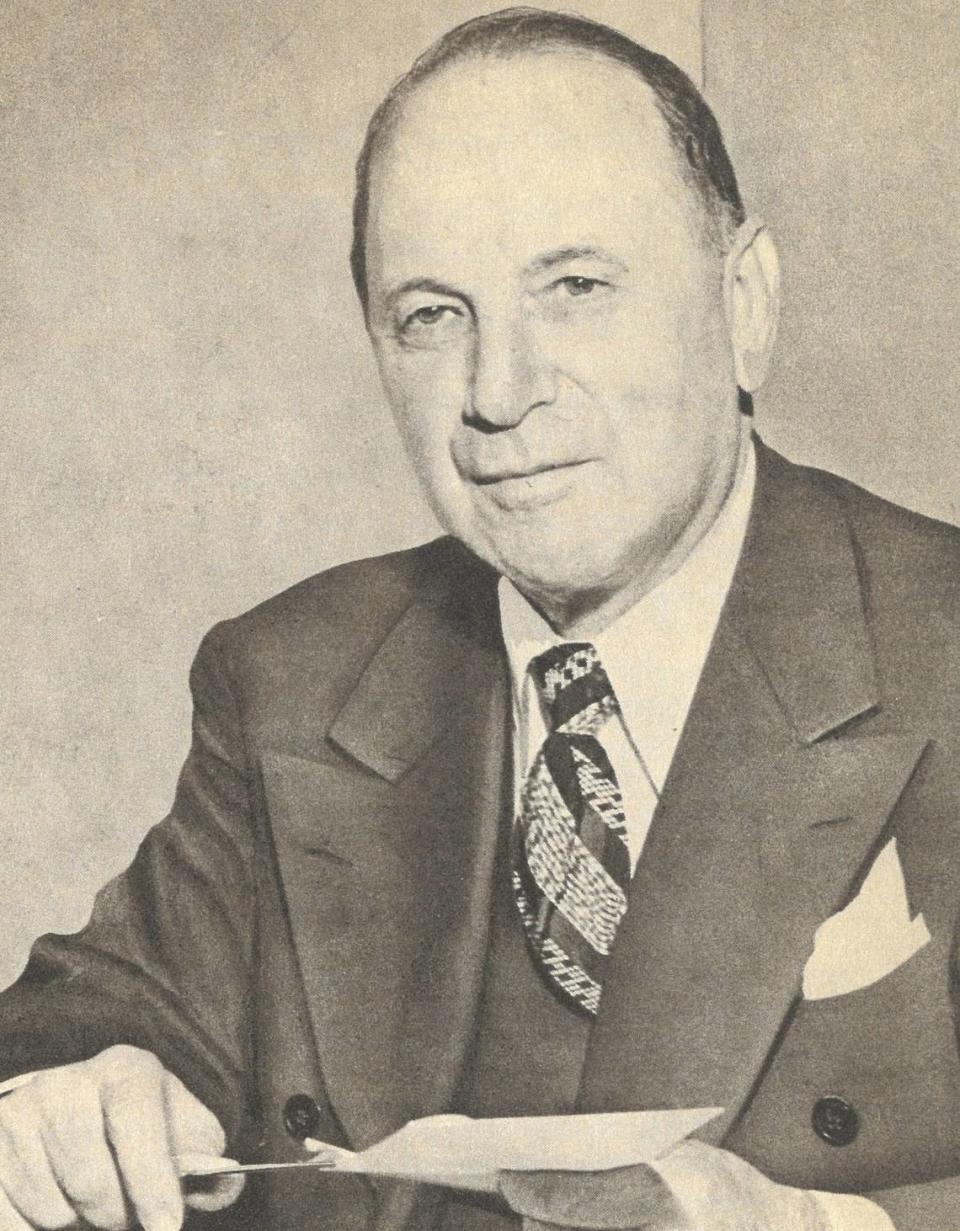
Maybe you’ve been there? Barney Allis Plaza is at the corner of 13th and Wyandotte streets downtown, next to the Kansas City Convention Center, right in front of the Kansas City Marriott Downtown.
Never noticed it? Maybe because the plaza is perched above street level and not visible from all four sides.
The cruel irony is that an urban park named after this man — so attentive to his guests that he would send rolls back to the hotel kitchen if they weren’t hot enough — became inhospitable over the years.
Built in the 1950s — and redesigned and rededicated in 1985 — Barney Allis Plaza in the heart of downtown has languished on life support for years. A 2019 study of the area diagnosed it as a “forlorn stretch of grass and asphalt.”
That’s about to change.
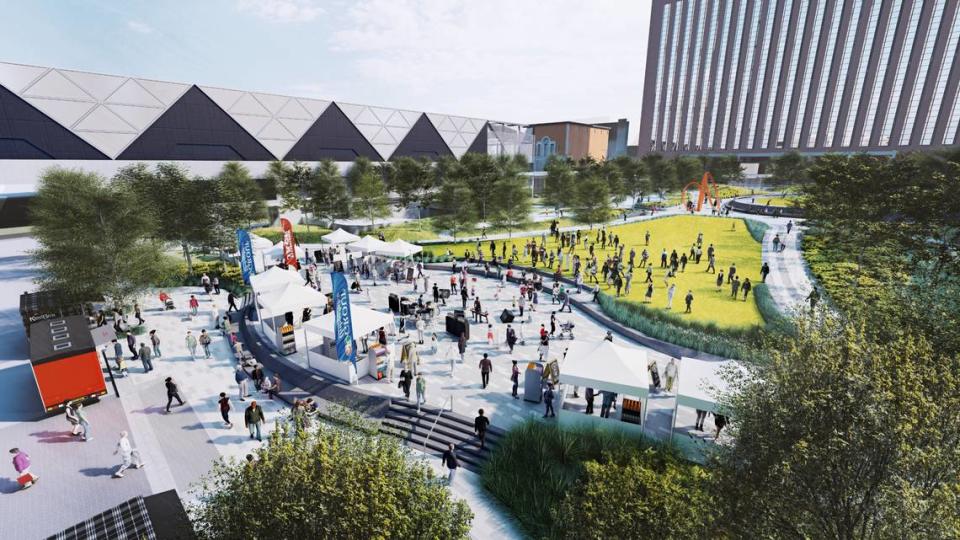
After years of wrangling over the unsafe parking structure under the plaza and dreams of how the plaza itself could be brought back to life, the area is being rebuilt and revitalized for an estimated $119.8 million.
The goal: have the project ready to greet soccer fans when FIFA World Cup matches come to town in the summer of 2026.
In its next life, the “forlorn” plaza is set to become an art-focused green space for out-of-towners and residents, with space for concerts, food trucks, a playground, dog park and, well, more grass, an escape from all that concrete of the city around it.
It will become a place with a purpose instead of just a place.
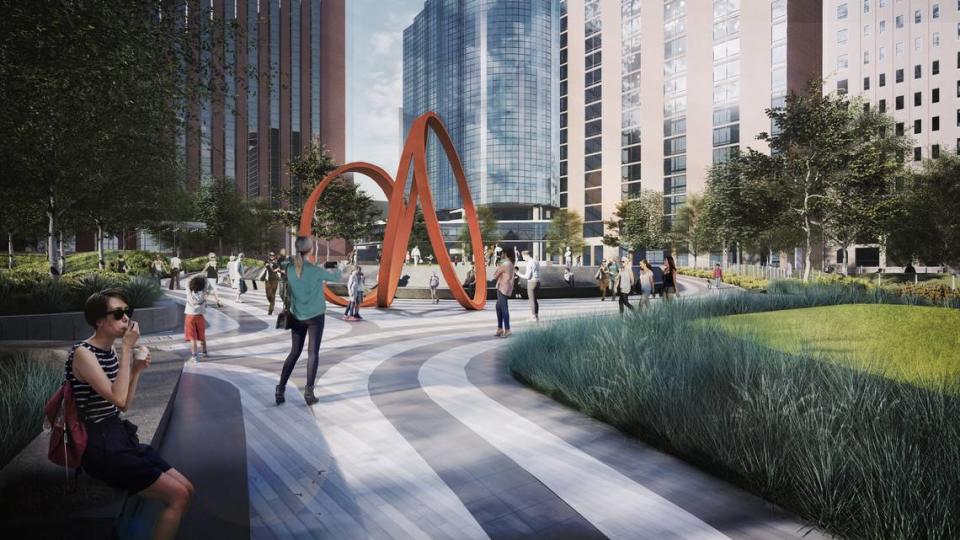
Allis family members watching
The first phase began in April when the Auditorium Parking Garage beneath the plaza closed for extensive repairs to make it safe again.
One of the last times City Hall spokeswoman Sherae Honeycutt visited the plaza, right before the garage closed, she was struck yet again by how few people use the plaza anymore.
At this point, the annual Fiesta Hispana is one of if not the only event that regularly takes place there.
“There were a few people there doing tai chi, but it made me sad … because I thought this was such a wonderful meeting place at one time,” she said.
“I think what’s really great about this development is that it’s giving back the opportunity to have a space that’s used for the way people would use it today.”
From his home in Washington state, Allis’ grandson, Lou Kovitz, is tracking the project. He sent letters to Kansas City officials encouraging the improvements.
This is personal to Kovitz, who recently came to Kansas City with other family members to show them Allis’ legacy here. The Muehlebach still stands at 12th Street and Baltimore, now part of the Marriott complex, though it no longer accommodates overnight guests.
Even though he catered to the rich and famous, Allis “was a very humble man. He wasn’t a bragger at all,” Kovitz told The Star. “In short, Barney was the man who I have looked up to my entire life.
“I have pictures of him with (Presidents) Kennedy and Eisenhower and … others of that ilk, if you will.”
The Man From Independence himself, Harry S. Truman, used the hotel’s Presidential Suite — the penthouse — as his headquarters in Kansas City until he left the presidency in 1953.
“A communications center run by the U. S. Army kept the penthouse suite in direct communication with the White House,” according to the Harry S. Truman Presidential Library and Museum.
“If you had a chance to meet (Allis) you would be even more impressed. He was a wonderful gentleman,” said Kovitz. “He started out selling newspapers in downtown Kansas City, and a few years later he ended up owning the Muehlebach Hotel.”
Kansas City has the chance to make sure Allis’ legacy means something for future generations, Honeycutt said, restoring it to a central meeting space in a part of the city “he was so proud of.”
Allis died in 1962, felled by a heart attack on a sidewalk not far from the Muehlebach. Kovitz was 17 when his grandfather died and remembers how the city mourned.
“There was a gathering, from what I recall, in what is now the Barney Allis Plaza, and the funeral procession out to the cemetery was miles long,” he said. “I may be exaggerating but it was very long, just an incredible amount of people.
“He was instrumental in the redevelopment, at the time, of downtown Kansas City. He wasn’t the only one, but he was a driving force.
“And what I’m most proud of is the fact that he came from nothing and he just excelled. It’s the typical self-made man story.”
‘He treated everyone the same’
The man always seen in a suit and tie, who drove around town in dark-colored Cadillacs, was not Papa or Papi or anything cutesy to his grandchildren. He asked them to call him Barney, Kovitz said.
Just Barney.
“He was a pivotal person in my view on what was right and what was wrong,” said Kovitz, whose mother, Dorothy, was Allis’ daughter.
“And he was a man who had incredible patience. I would sit in his office across the desk from him and he would have a cigar in the ashtray and we would just talk. No agenda, no pressure, no nothing.”
Growing up in the Allis family had perks, like meeting Truman — “that was through Barney,” Kovitz said — and vacationing on Martha’s Vineyard in Massachusetts with the famous Kansas City artist Thomas Hart Benton and his wife, Rita.
“I was just a kid,” Kovitz recalled. “We would join them for lobster bake and clambakes on the beach when Martha’s Vineyard was (just) nothing.”
But Allis “had no sense of how important he was to Kansas City,” his stepson, Doug Sellers, told The Star.
Maybe that’s because “he treated everyone the same” no matter how famous they were, said Sellers, who lives in Arizona.
Though he had rooms at the hotel, Allis also shared a home with his second wife, Irene — who was Sellers’ mother — at Lake Lotawana, about 35 miles southeast of downtown.
He was just as hospitable with guests at the lake as he was with guests at the Muehlebach. He enjoyed cooking for his house guests.
(He treated his dog well, too, Sellers recalled. Allis’ constant canine companion “was always by Barney at the head of the table. He’d give him little bits of food.”)
“He had a heart of gold, but as a businessman he was tungsten and steel,” said Sellers, who remembered that when Allis once gave him a job as a desk clerk at the hotel he had to work six days a week to avoid any whiff of favoritism.
“Strictly business,” he said.
Sellers remembers his stepfather’s handshake. “I thought my handshake was good until I shook hands with him. I never came across anybody that had a handshake so firm,” he said. “For him, it was the measure of a man.”
Allis never made him feel like he was just a stepson, Sellers said. He recalled how once, when he was in high school, his parents threw a “suit and tie” party, one of many, at their lake house.
Allis wanted to make sure the teenage Sellers didn’t feel out of place among a bunch of Kansas City movers and shakers.
Knowing that Sellers’ best friend was working that day at a mechanic’s shop, Allis called the owner and asked him to give the boy the day off “so I had somebody to talk to and run around with,” Sellers said. “That was part of his heart.”
He also remembered how the shop owner responded to his stepfather’s request: “Yes, Mr. Allis. Yes, Mr. Allis.”
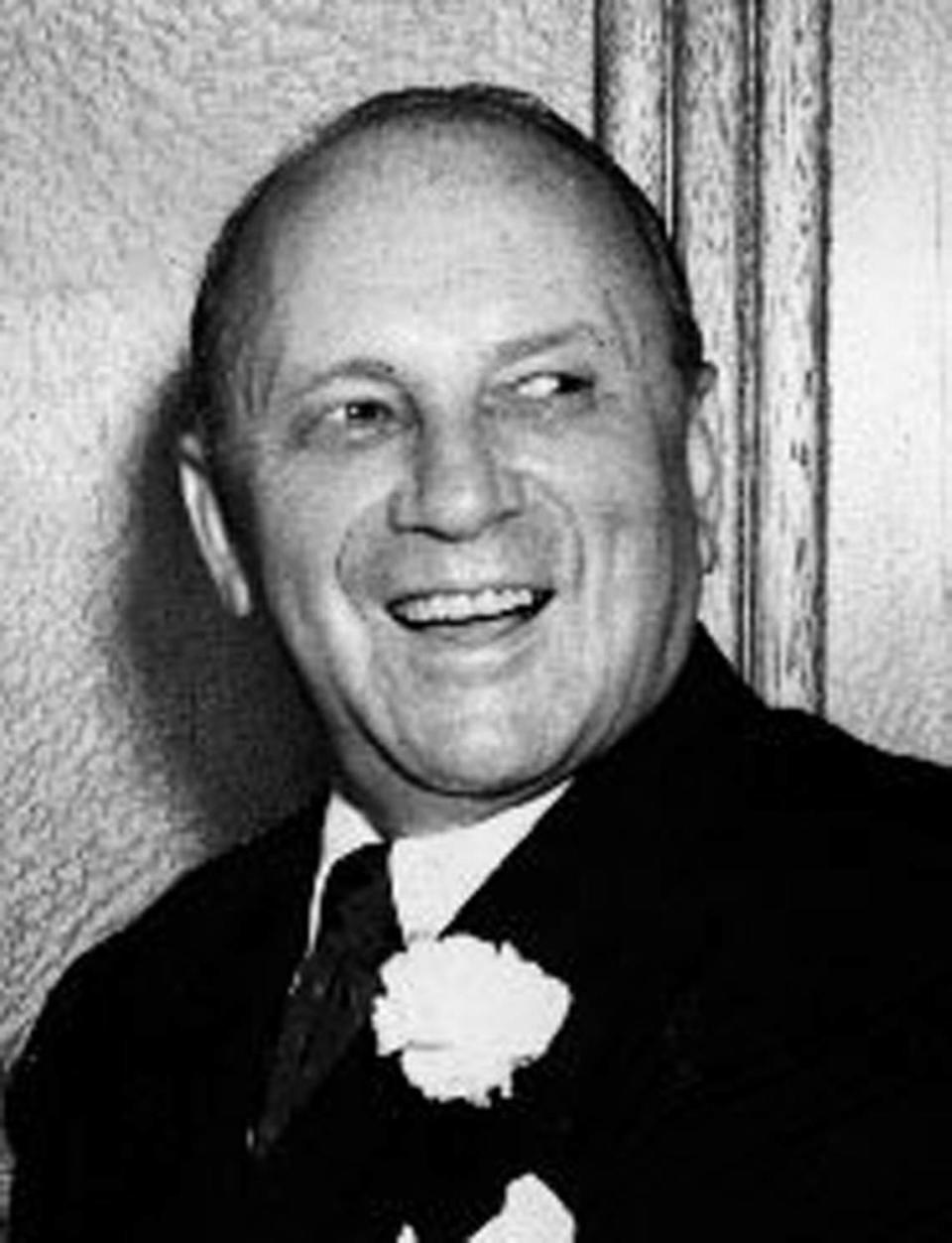
‘A giant among men’
Allis was 2 when he and his parents and his siblings moved to Kansas City from Poland. He started working when he was just 6 years old — he left school after fourth grade — to help support his family.
He sold newspapers on street corners and worked in a print shop where, history notes, he stood on a small wooden box because he was so small. (“He was a giant among men,” Kovitz said.)
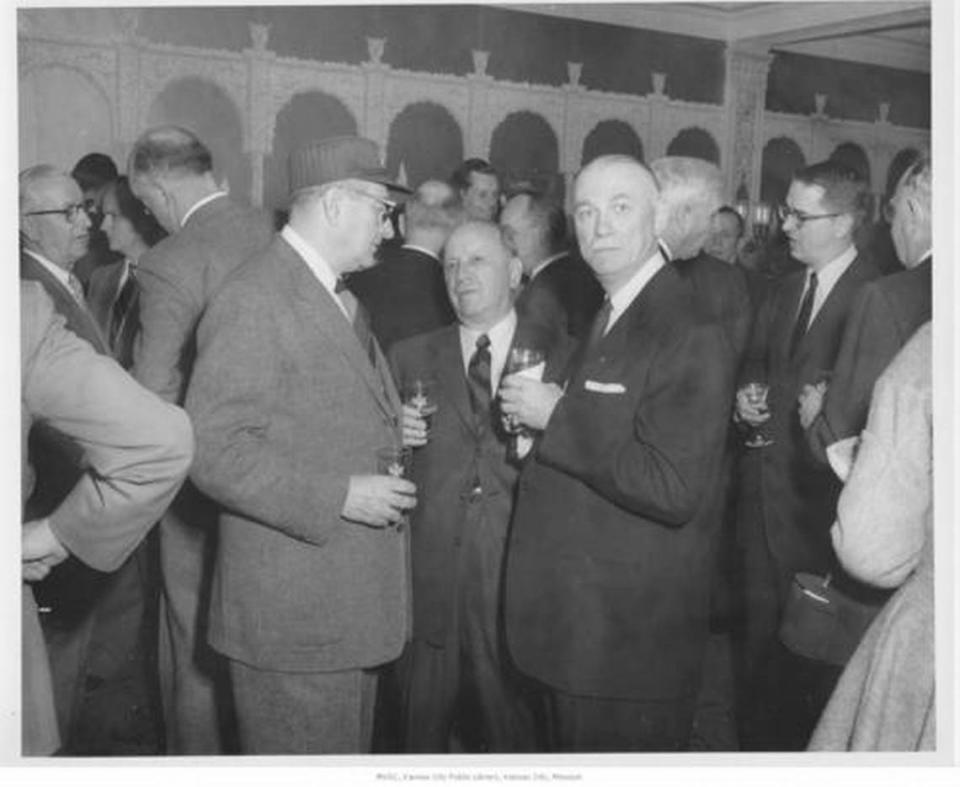
He got to know the people running the hotels and restaurants in town when he started a trade journal for them, Tavern Talk. Deciding to try his hand at hospitality, he studied the industry and bought a stake in hotels in Joplin and Columbia, Missouri.
But it wasn’t until he took over the Muehlebach that he shifted into high gear.
“He was just Mr. Hospitality,” Kovitz said. “I do remember he was in the kitchen at the hotel at 7 o’clock in the morning. He was, I guess they say in this day and age, married to his profession.”
Everything had to be top-notch for guests. Kovitz remembers a sign posted in the kitchen: “Hot food hot, cold food cold.”
“And he was a stickler for that,” Kovitz said, recalling a meal his family had at the hotel where rolls were brought to the table that weren’t hot enough for his grandfather. “So he sent them back, but he didn’t do it in a nasty way,” he said.
“That was the thing, he expected the food that came out of the kitchen to be properly prepared.”
Kansas City’s ‘front yard’
After Allis died suddenly, the City Council, led by Mayor H. Roe Bartle, voted to rename the Auditorium Plaza above the Municipal Auditorium Garage in his honor. It was dedicated in October 1962.
The current description of Barney Allis Plaza on the convention center’s website makes it sound more like an oasis than a “forlorn” stretch of asphalt.
“Visitors and locals enjoy the tree-lined urban park with fountains, sculptures, seating areas and tennis court — a unique green outdoor reception, festival and activity area,” it says.
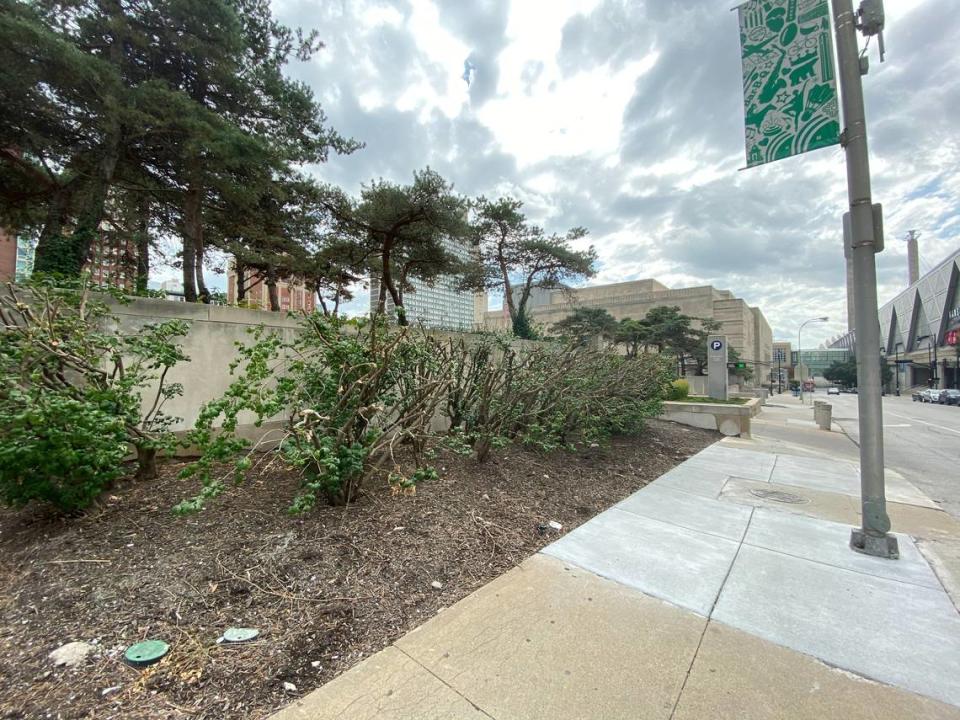
Reality check: The tennis court is now marked for the playground game of four square. “When I saw those I was, like, flashback,” said Honeycutt. “Who plays four square anymore?”
Four years ago a panel advising the city on how to revamp the area concluded it has the potential to be Kansas City’s “front yard.”
The group, assembled by the Urban Land Institute Kansas City District Council at the request of the Downtown Council of Kansas City, described how art installations and other changes could modernize the space.
It foresaw “something that’s Instagram-able.” The plaza certainly offers a unique view of Kansas City’s skyline.
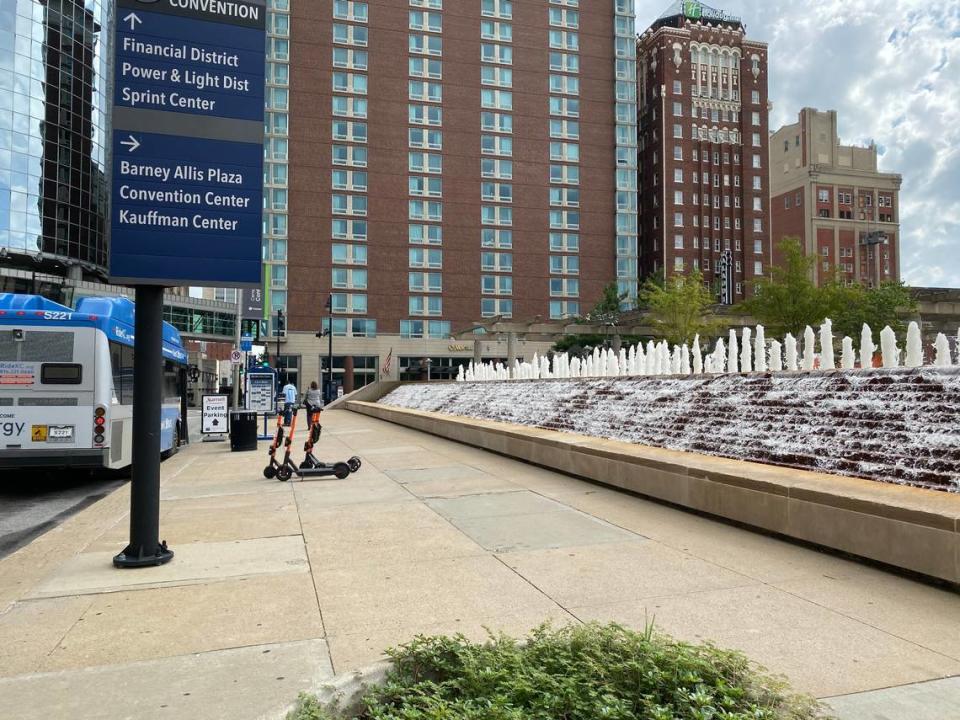
The makeover now is in the hands of the city, HOK architects, McCownGordon Construction, and other consultants. The Downtown Council, also involved, lists the project as part of its Imagine Downtown KC 2030 plan for revitalizing the city center.
People who didn’t like climbing stairs to enter the plaza from the south will be happy to know that won’t be a hurdle anymore.
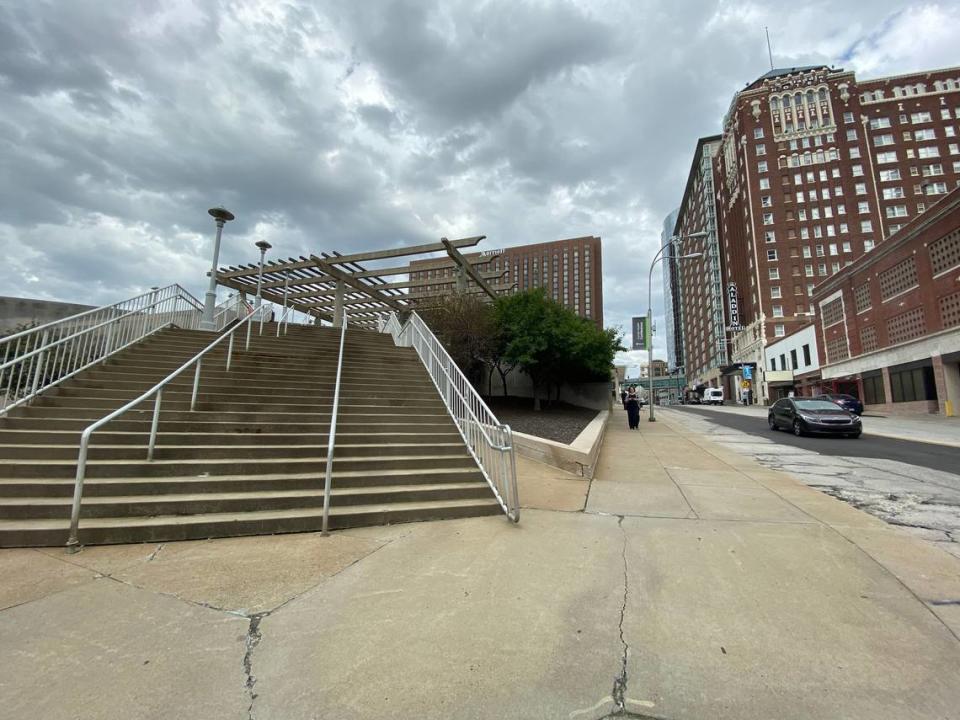
“The goal is to have it completely flush so that people can just walk in from any side,” said Honeycutt. “We want it to be accessible to everyone. With the way we think about building now, if someone has a wheelchair, the expectation is not that they would have to go around the block to get into the park.”
Another goal: bring back the magic to a place that once hosted big tennis tournaments — Billie Jean King played there once — and attracted big-name concerts. (Is it just lore that Elton John once played there?)
“There’s going to be space where we could have some kind of bigger artist, anybody that wants to use that space for an outdoor show, we could do that again,” said Honeycutt.
“So that’s really exciting that there’s going to be this gathering space because we don’t see events there anymore. We don’t see people gathering there.”

More by happenstance than design, the plaza’s restoration comes when a lot of people are watching Kansas City, thanks to the Travis Kelce-Taylor Swift romance. Honeycutt, a self-described Swiftie, said the attention is welcome.
“This couldn’t come at a better time,” she said. “We didn’t expect Travis Kelce to fall in love with Taylor Swift, but they did fall in love,” and now a lot of people are watching Kansas City.
When visitors come, Barney Allis Plaza is “one of the first examples that people see of Kansas City culture, because they’re coming to the convention center from out of town … especially with youth sports, professional conventions,” Honeycutt said.
“We have thousands of people coming to Kansas City, staying in hotels in that area.
“A lot of them are families. And to have a park that is so accessible to the convention center really is going to make a mark on these families that are visiting, and the public in general, giving them a space to go outside, to touch some grass. Barney Allis is going to offer that.”


